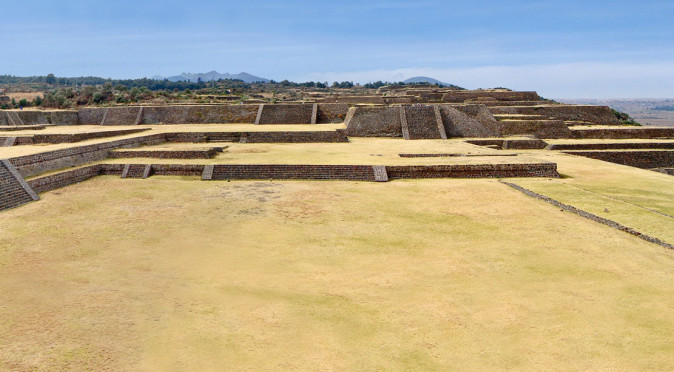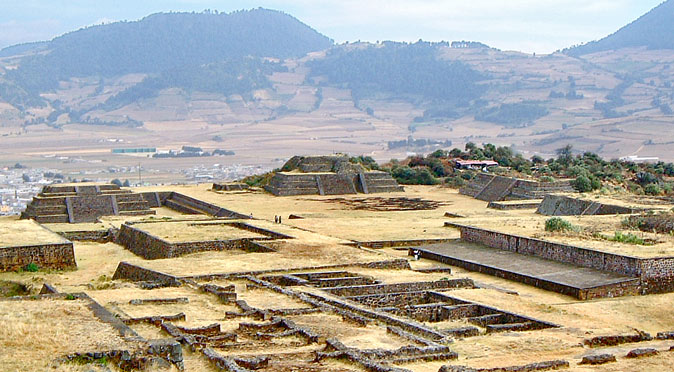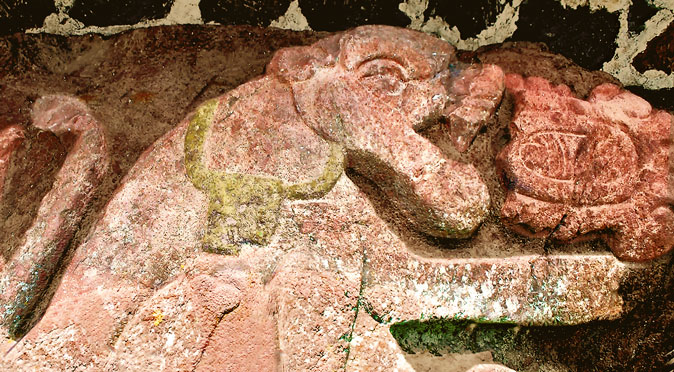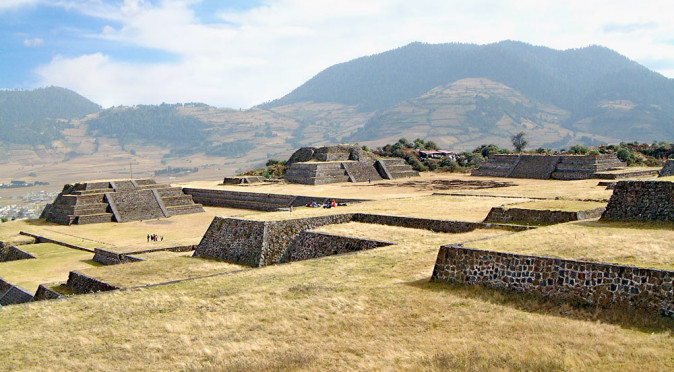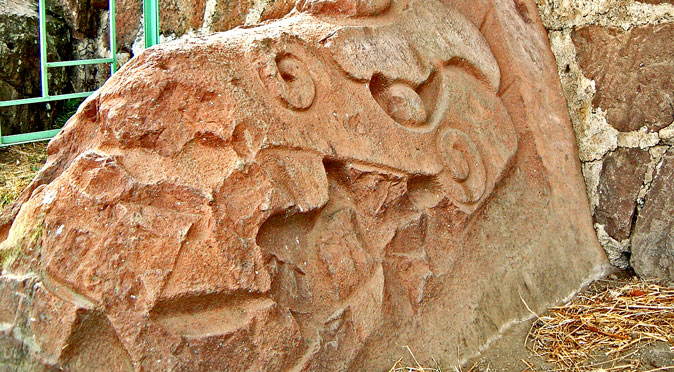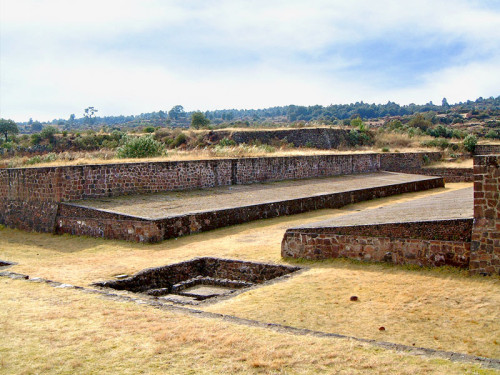
W0015TO: Ball Court with excavated Temazcal in foregroundThe Mesoamerican Ball Court at Teotenango is reasonably grand, measuring 53 metres in length. It features rings mounted on both walls midway down the court and gentle sloping walls which lead up from the court. The sloping walls are terminated by a vertical walls, which both helped keep the ball in play and provided and platform for spectators to watch from. Teotenango’s ballcourt runs east-west and at the eastern end is an excavated Tamazcal – or steam bath – although this one was covered over when the ballcourt was built and only the foundations have been uncovered. No one is certain about the rules of the Ballgame, but from pictorial evidence found in murals, reliefs, and in the painted books that the Mesoamerican people made, called Codices, it is known that the game was very important and often resulted in death for either the winning or losing team.
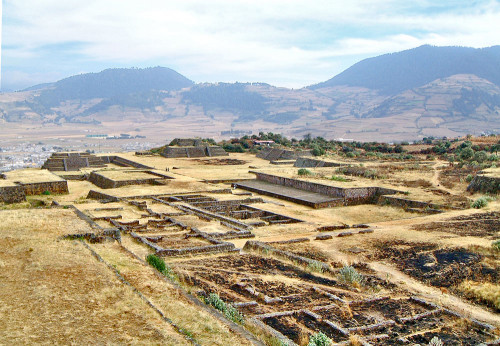
W009TO: Looking East From Group de SerpentBall courts are found in almost every Mesoamerican city, regardless of when it was built or who it was built by. The game undoubtedly originated with the Olmec’s, who discovered the art of rubber production and created the first rubber balls with which the game is played. The balls were very heavy and were typically hit by swinging the hip. Whilst the use of other limbs was probably accepted, it would have run the risk of breakage, which in ancient times could be deadly. The aim of the game was to keep the ball bouncing up and down the court, which was possibly symbolic of the sun’s journey across the sky and then back through the underworld – which could also explain why the courts are typically aligned on an est-west axis. The Ball Court was one of the earliest structures built at Teotenango and was thought to have been added between 900AD-1100AD.

